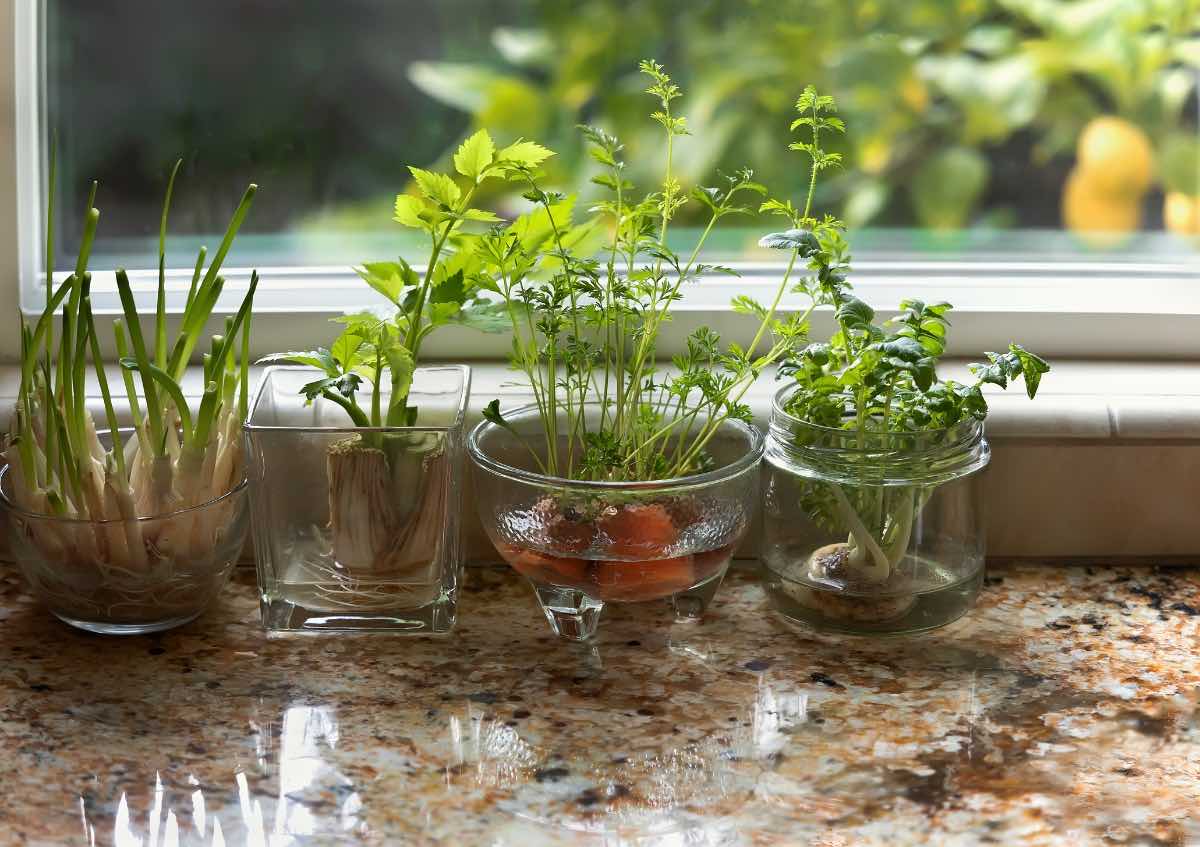

Articles
How To Start An Herb Garden Indoors
Modified: January 20, 2024
Learn how to start your own indoor herb garden and enjoy fresh herbs year-round. Discover the best tips and techniques for successful indoor gardening.
(Many of the links in this article redirect to a specific reviewed product. Your purchase of these products through affiliate links helps to generate commission for Storables.com, at no extra cost. Learn more)
Introduction
Welcome to the wonderful world of indoor herb gardening! Whether you have a green thumb or are a novice gardener, growing herbs indoors is a rewarding and fulfilling hobby. Not only do indoor herb gardens add beauty and fragrance to your living space, but they also provide you with a readily available supply of fresh herbs to enhance your culinary creations.
With the right knowledge and a little bit of dedication, anyone can successfully start and maintain an indoor herb garden. In this article, we will guide you through the process of setting up and caring for your very own indoor herb garden, ensuring that you have all the information you need to get started.
But before we dive into the practical aspects of indoor herb gardening, let’s take a moment to explore some of the benefits that come along with this wonderful hobby.
Key Takeaways:
- Enjoy the convenience of having fresh, flavorful herbs at your fingertips with an indoor herb garden. Save money, enhance your cooking, and create a visually appealing, aromatic oasis in your home.
- Overcome common challenges in indoor herb gardening by troubleshooting issues like lack of growth, yellowing leaves, pests, and leggy growth. Maintain healthy, thriving herb plants for a bountiful harvest.
Read more: How To Start An Indoor Garden
Benefits of an Indoor Herb Garden
Having an indoor herb garden offers a multitude of benefits that go beyond just having fresh herbs at your fingertips. Here are a few of the advantages of cultivating your own indoor herb garden:
- Fresh and Flavorful Herbs: When you grow your own herbs indoors, you can enjoy the unrivaled taste and aroma of freshly harvested herbs in your dishes. The flavor of freshly picked herbs is far superior to store-bought ones.
- Convenience: With an indoor herb garden, you don’t need to venture outside or rely on grocery stores to get the herbs you need. They are conveniently located right in your own home, ready to be picked whenever you need them.
- Cost-effective: Growing herbs indoors is a cost-effective solution compared to buying herbs regularly. Once you have set up your indoor herb garden, it requires minimal investment and can provide you with a continuous supply of herbs for years to come.
- Aesthetically Pleasing: Indoor herb gardens add a touch of natural beauty and greenery to your indoor space. The vibrant colors, shapes, and fragrances of the herbs can create a visually appealing and calming atmosphere.
- Health Benefits: Many herbs have health benefits, including boosting immunity, aiding digestion, and reducing inflammation. With your own indoor herb garden, you can ensure that your herbs are grown organically and free from harmful chemicals.
Now that you understand the many advantages of having an indoor herb garden, let us move on to the next step, which is choosing the right location for your herb garden.
Key Takeaways:
- Enjoy the convenience of having fresh, flavorful herbs at your fingertips with an indoor herb garden. Save money, enhance your cooking, and create a visually appealing, aromatic oasis in your home.
- Overcome common challenges in indoor herb gardening by troubleshooting issues like lack of growth, yellowing leaves, pests, and leggy growth. Maintain healthy, thriving herb plants for a bountiful harvest.
Read more: How To Start An Indoor Garden
Benefits of an Indoor Herb Garden
Having an indoor herb garden offers a multitude of benefits that go beyond just having fresh herbs at your fingertips. Here are a few of the advantages of cultivating your own indoor herb garden:
- Fresh and Flavorful Herbs: When you grow your own herbs indoors, you can enjoy the unrivaled taste and aroma of freshly harvested herbs in your dishes. The flavor of freshly picked herbs is far superior to store-bought ones.
- Convenience: With an indoor herb garden, you don’t need to venture outside or rely on grocery stores to get the herbs you need. They are conveniently located right in your own home, ready to be picked whenever you need them.
- Cost-effective: Growing herbs indoors is a cost-effective solution compared to buying herbs regularly. Once you have set up your indoor herb garden, it requires minimal investment and can provide you with a continuous supply of herbs for years to come.
- Aesthetically Pleasing: Indoor herb gardens add a touch of natural beauty and greenery to your indoor space. The vibrant colors, shapes, and fragrances of the herbs can create a visually appealing and calming atmosphere.
- Health Benefits: Many herbs have health benefits, including boosting immunity, aiding digestion, and reducing inflammation. With your own indoor herb garden, you can ensure that your herbs are grown organically and free from harmful chemicals.
1. Fresh and Flavorful Herbs: Unlike store-bought herbs that have often been sitting on shelves for days or even weeks, herbs grown in your own indoor garden can be harvested and used immediately, ensuring peak freshness and flavor in your culinary creations. Without the need for long transportation and storage, the amazing scent and taste of freshly cut herbs will elevate your dishes to a whole new level.
2. Convenience: With an indoor herb garden, you have the luxury of having your favorite herbs just a few steps away, right in your kitchen or any other convenient location in your home. You no longer need to make the trip to the grocery store or settle for dried herbs. Simply walk over to your indoor herb garden, snip off a few leaves, and add them to your recipe. It doesn’t get any fresher or more convenient than that!
3. Cost-effective: Buying fresh herbs from the store can add up over time, especially if you use them frequently. By growing your own indoor herb garden, you can significantly reduce your grocery bill and enjoy an abundant supply of herbs for a fraction of the cost. Plus, you won’t have to worry about wasting unused herbs that often go bad before you have a chance to use them.
4. Aesthetically Pleasing: Indoor herb gardens bring a touch of nature indoors, adding beauty and freshness to your living space. The vibrant greenery and delicate foliage of herbs can act as a natural decoration, enhancing the overall aesthetic appeal of your home. Whether you choose to display your herb garden on a windowsill or as a centerpiece on your dining table, it will undoubtedly leave a positive and calming visual impact.
5. Health Benefits: Herbs are not only flavorful additions to your meals but are also packed with beneficial compounds and nutrients. Many herbs have proven health benefits, such as boosting immune function, aiding digestion, relieving stress, and reducing inflammation. By growing your own indoor herb garden, you have the assurance of using herbs that are free from harmful pesticides and chemicals, promoting a healthier lifestyle for you and your family.
Now that you understand the many advantages of having an indoor herb garden, let us move on to the next step, which is choosing the right location for your herb garden.
Choosing the Right Location
When it comes to indoor herb gardening, one of the most crucial factors for success is choosing the right location for your herb garden. The ideal location should provide the optimal conditions for your herbs to thrive. Here are some considerations to keep in mind when selecting the location:
1. Sunlight: Herbs require a good amount of sunlight to grow and flourish. Choose a location that receives at least 6 hours of direct sunlight each day. South-facing windows are usually the best option for maximum sun exposure. If your indoor space doesn’t receive enough sunlight, you can supplement it with artificial grow lights to ensure your herbs get the light they need.
2. Temperature: Most herbs prefer temperatures between 60°F and 75°F (15°C and 24°C). Avoid placing your indoor herb garden near drafty windows or heating vents, as these can cause temperature fluctuations that may stress your herbs. Find a spot that maintains a consistent and moderate temperature throughout the day.
3. Humidity: Herbs generally prefer moderate humidity levels. Indoor environments tend to be drier, especially during the winter months when heating systems are in use. To increase humidity around your herbs, you can place a tray filled with water near your herb garden or use a humidifier.
4. Accessibility: Choose a location that is easily accessible for watering, harvesting, and caring for your herbs. Avoid cramped or hard-to-reach spaces that may make it difficult to tend to your plants. You want to make the process as enjoyable and convenient as possible.
5. Space: Consider the available space in your home when choosing the location for your indoor herb garden. Whether you opt for a windowsill, a countertop, a shelf, or a dedicated plant stand, ensure that the area can accommodate the size and number of herb pots or containers you plan to use.
6. Safety: Keep in mind that some herbs may be toxic to pets or children if ingested. If you have pets or young children, choose a location that is out of their reach to avoid any potential hazards.
By taking these factors into account, you can select the perfect location for your indoor herb garden. Once you have determined the right spot, it’s time to move on to the next step – selecting the herb varieties that best suit your gardening goals and culinary preferences.
Selecting the Herb Varieties
Choosing the right herb varieties is an exciting and important step in creating your indoor herb garden. The herb varieties you select will depend on your personal preferences, culinary needs, and the growing conditions in your indoor space. Here are some factors to consider when selecting your herb varieties:
1. Culinary Use: Think about the herbs you use most frequently in your cooking. Are you a fan of Mediterranean cuisine? Consider growing basil, oregano, thyme, and rosemary. Are you drawn to Asian flavors? Include cilantro, Thai basil, and mint in your herb garden. Selecting herbs that align with your preferred cuisine will ensure that you have the flavors you love readily available.
2. Space and Size: Consider the available space in your indoor herb garden and choose herbs that will fit comfortably. Some herbs, like basil and cilantro, tend to grow bushy and may require larger pots. Other herbs, such as chives or parsley, can be grown in smaller containers or even in a vertical garden system. Opting for compact or dwarf varieties can also be a space-saving solution.
3. Growth Requirements: Different herbs have varying growth requirements in terms of sunlight, temperature, and humidity. Research the specific needs of the herbs you are interested in growing and ensure they align with the conditions in your indoor space. For example, rosemary and lavender prefer drier soil, while mint and parsley thrive in moist conditions. Choose herbs that can thrive in the environment you can provide.
4. Beginner-Friendly Herbs: If you are new to herb gardening, consider starting with herbs that are known to be more forgiving and easy to grow. Some beginner-friendly options include basil, chives, mint, and thyme. These herbs are relatively resilient and can tolerate a wider range of growing conditions.
5. Aesthetics: Think about the visual appeal of the herbs you choose. Herbs come in an array of colors, textures, and shapes, ranging from the soft fronds of dill to the fuzzy leaves of sage. Consider how the herbs will complement your indoor space and add visual interest to your herb garden.
6. Personal Preferences: Ultimately, your indoor herb garden should reflect your personal tastes and preferences. If you have a particular affinity for a certain herb, whether it’s for its flavor, fragrance, or cultural significance, make sure to include it in your herb garden. Gardening is a personal experience, and growing herbs that you love will make the process even more enjoyable.
By considering these factors, you can create a diverse and customized selection of herb varieties that will thrive in your indoor garden. Once you have chosen your herbs, it’s time to gather the necessary supplies to set up your indoor herb garden.
Read more: How To Start A Indoor Garden
Supplies Needed for Indoor Herb Gardening
Before you embark on your indoor herb gardening journey, it’s important to gather the necessary supplies to ensure the success and overall health of your herb plants. While the list of supplies may vary depending on your specific setup and preferences, here are some essential items to consider:
1. Containers or Pots: Choose containers that are appropriate for the herb varieties you have selected. Ensure that the containers have drainage holes at the bottom to prevent waterlogging. Good options include clay pots, plastic containers, or fabric grow bags. The size of the pots should accommodate the eventual growth of the herbs.
2. Potting Soil: Select a high-quality potting mix that is well-draining and rich in organic matter. Avoid using garden soil, as it can be heavy and may not provide the necessary drainage for indoor pots. Look for a potting mix specifically formulated for indoor plants or herbs.
3. Seeds or Seedlings: Depending on your preference, you can start your indoor herb garden from seeds or purchase pre-grown herb seedlings from nurseries or garden centers. Starting from seeds adds an extra level of satisfaction and allows for a wider variety of herb choices.
4. Watering Can or Spray Bottle: A watering can or spray bottle is necessary for providing moisture to the herbs. Opt for a watering can with a long spout or a spray bottle with a fine mist setting. This will help you water your herbs gently and effectively, preventing soil erosion and overwatering.
5. Fertilizer: Indoor herb plants will benefit from periodic feeding to ensure healthy growth and abundant foliage. Choose a balanced liquid fertilizer or a slow-release granular fertilizer specifically formulated for herbs or indoor plants. Follow the instructions on the fertilizer packaging for the proper application and dosage.
6. Plant Labels: It’s helpful to label your herb plants to keep track of their names, especially if you are growing multiple varieties. Plastic or wooden plant labels can be inserted into the soil next to each herb, allowing you to identify and differentiate your plants easily.
7. Pruning Shears or Scissors: Pruning shears or sharp scissors are essential for trimming and harvesting your herbs. Regular pruning helps promote bushier growth and prevents herbs from becoming leggy. Make sure to sanitize your pruning tools before and after use to prevent the spread of diseases.
8. Saucers or Trays: Place saucers or trays under your herb pots to catch excess water runoff. This will protect your indoor surfaces from water damage and facilitate easier cleanup. Ensure that the saucers or trays are appropriately sized to hold any excess water without overflowing.
9. Optional Extras: Depending on your specific setup, you may also consider additional items such as plant stands, grow lights, timers, or humidity trays to enhance the growth and care of your indoor herb garden. These extras can be particularly useful if you have limited sunlight or need to create a more controlled environment.
By gathering these supplies, you will have everything you need to start your indoor herb garden successfully. With the right tools and materials, you can create a thriving and beautiful herb oasis right in the comfort of your own home.
Preparing the Indoor Herb Garden Space
Now that you have your supplies ready, it’s time to prepare the indoor space for your herb garden. Creating the right environment will provide your herbs with the optimal conditions for growth and ensure their overall health. Here are the steps to prepare your indoor herb garden space:
1. Clean the Area: Start by clearing and cleaning the designated area for your herb garden. Remove any clutter, dust, or debris that may interfere with your gardening efforts. A clean space will not only enhance the aesthetics but also reduce the chances of pest infestations and diseases.
2. Ensure Proper Drainage: If you are using pots or containers for your herbs, ensure that they have drainage holes at the bottom. If the containers don’t have holes, you can either drill some yourself or place a layer of small rocks or pebbles at the bottom of the container to facilitate drainage. Good drainage is essential to prevent waterlogging and root rot.
3. Set Up Trays or Saucers: Place trays or saucers under the pots or containers to catch any excess water that drains out. This will prevent water from staining or damaging your indoor surfaces. Make sure the trays are properly sized and can hold the water without overflowing.
4. Arrange the Herb Pots: Position your herb pots or containers in the designated space, taking into consideration their individual sunlight requirements. Group herbs with similar light needs together to make it easier for you to provide the right amount of sunlight to each plant. Consider the aesthetics as well, arranging the pots in an organized and visually appealing manner.
5. Provide Proper Air Circulation: Good air circulation is important for preventing the growth of mold and mildew and promoting healthy plant growth. Avoid overcrowding the herb pots and ensure there is enough space between them to allow for air movement. If the space is limited, you can use small fans or open windows periodically to improve air circulation.
6. Add a Humidity Tray: If the air in your indoor space is particularly dry, you can create a humidity tray to increase the moisture levels around your herbs. Simply place a tray filled with water near the herbs without letting the pots sit directly in the water. As the water evaporates, it will increase the humidity in the immediate area.
7. Adjust the Lighting: If your indoor space doesn’t receive sufficient natural sunlight, you may need to supplement it with artificial lighting. Position grow lights or fluorescent bulbs above your herb garden to provide the necessary light for photosynthesis. Adjust the height and intensity of the lights based on the specific light requirements of your herbs.
8. Set Up a Watering Routine: Establish a regular watering routine for your herb garden. Monitor the moisture levels of the soil and water your herbs when the top inch of the soil feels dry to the touch. Avoid overwatering, as it can lead to root rot. Each herb may have its own watering needs, so take into consideration the specific requirements of the herbs you are growing.
By following these steps, you will have a well-prepared indoor herb garden space that provides the right conditions for your herbs to thrive. Now it’s time to plant the herb seeds and embark on your gardening journey!
When starting an herb garden indoors, make sure to choose a sunny location for your plants, as most herbs require at least 6 hours of sunlight per day to thrive. If natural light is limited, consider using a grow light to supplement.
Planting the Herb Seeds
Planting herb seeds is an exciting and rewarding step in the process of starting your indoor herb garden. Here are the essential steps to successfully plant herb seeds:
1. Prepare the Containers: Fill the pots or containers with the potting mix, leaving about an inch of space at the top. Gently pat the soil down to remove any air pockets and create a level surface for planting the seeds.
2. Moisten the Soil: Before planting the herb seeds, moisten the potting soil with water. Avoid overwatering, as excessively wet soil can lead to seed rot. The soil should be damp but not soggy.
3. Plant the Seeds: Follow the packet instructions for each herb variety, as planting depth and spacing requirements may differ. Generally, herb seeds are sown at a shallow depth, typically about ¼ to ½ inch deep. Place the seeds onto the soil surface and press them lightly into the soil. Space the seeds according to the recommended spacing for each herb.
4. Cover and Label: Once the seeds are sown, lightly cover them with a thin layer of soil or vermiculite. This will provide them with the necessary darkness to germinate. Place plant labels in each pot to keep track of the herbs you have planted.
5. Water Carefully: After planting the seeds, water the pots gently using a watering can or a spray bottle. Be cautious not to disturb the soil or dislodge the seeds. Water thoroughly but avoid saturating the soil. For small pots, bottom watering can be beneficial by placing the pot in a tray of water and allowing it to absorb moisture through the drainage holes.
6. Provide Warmth and Humidity: Herbs often require warm temperatures to germinate. Place a clear plastic bag or a plastic wrap loosely over the containers to create a mini greenhouse effect. This will help to retain moisture and increase the humidity level around the seeds. Keep the containers in a warm location, ideally between 70°F and 80°F (21°C to 27°C), until the seeds germinate.
7. Monitor Germination: Different herbs have varying germination times, typically ranging from 7 to 21 days. Monitor the containers carefully and watch for the emergence of seedlings. Once the majority of the seeds have germinated, remove the plastic cover and place the pots in a location with adequate light.
8. Maintain Ideal Growing Conditions: After germination, place the herb pots in a sunny location that receives at least 6 hours of direct sunlight per day. If natural sunlight is not sufficient, supplement with artificial grow lights to provide the necessary light intensity. Water the seedlings regularly, keeping the soil evenly moist but not waterlogged.
9. Thin the Seedlings: As the seedlings grow, they will compete for space and nutrients. Once they have developed a few sets of true leaves, thin them out by removing the weaker seedlings, leaving only one or two seedlings per pot. This will allow the remaining seedlings to grow stronger and prevent overcrowding.
10. Monitor and Care for the Seedlings: Watch for any signs of pests, diseases, or nutrient deficiencies. Provide support, such as stakes or plant clips, for herb varieties that tend to grow tall or become top-heavy. Regularly prune the herbs to encourage bushier growth and promote overall plant health.
By following these steps, you will successfully plant herb seeds and kickstart the growth of your indoor herb garden. With time and care, your herb seedlings will flourish, providing you with a bountiful harvest of fresh and flavorful herbs.
Watering and Fertilizing the Herbs
Proper watering and fertilization are essential for the health and growth of your indoor herb garden. Here are some important tips on how to effectively water and fertilize your herbs:
Watering:
1. Observe Moisture Levels: Check the moisture levels of the soil regularly by inserting your finger about an inch deep into the soil. If it feels dry at that depth, it’s time to water your herbs. Avoid overwatering, as it can lead to root rot, but ensure that the soil is consistently moist and never completely dry.
2. Watering Techniques: Water your herbs gently to avoid disturbing the soil or damaging the delicate stems and leaves. Use a watering can with a long spout or a spray bottle with a fine mist setting. Water the soil directly, avoiding wetting the foliage excessively.
3. Drainage: Ensure that your herb pots have proper drainage holes to prevent waterlogged soil. Excess water should be able to drain freely. Empty any excess water collected in the trays or saucers to avoid the roots sitting in standing water.
4. Consistent Moisture: Aim for consistent moisture levels in the soil for most herbs. Avoid allowing the soil to completely dry out between watering, as it can cause stress to the plants. However, be cautious not to keep the soil overly wet, as it can lead to root diseases.
Fertilizing:
1. Choose the Right Fertilizer: Select a balanced, water-soluble fertilizer specifically formulated for herbs or indoor plants. Look for a fertilizer with equal or balanced ratios of nitrogen (N), phosphorus (P), and potassium (K). Read and follow the instructions on the fertilizer package for proper dilution and application rates.
2. Fertilizing Frequency: Fertilize your herbs once every 2-4 weeks during the growing season, which is typically spring and summer. Reduce or cease fertilization during fall and winter when growth rates slow down. Adjust the frequency and strength of fertilization based on the specific needs of your herbs and the recommendations on the fertilizer label.
3. Apply Diluted Fertilizer: Dilute the fertilizer according to the instructions on the package. Apply the diluted fertilizer to the soil around the base of the plants, avoiding direct contact with the foliage. Water the plants after fertilizing to ensure the nutrients are absorbed into the soil.
4. Organic Alternatives: If you prefer organic options, consider using compost or organic fertilizers, such as fish emulsion or seaweed extract. These natural fertilizers provide nutrients to the plants and improve soil health without the use of synthetic chemicals.
5. Observe Plant Responses: Pay attention to your herb plants’ responses to fertilization. If you notice signs of fertilizer burn, such as leaf scorching or stunted growth, dilute the fertilizer further or reduce the frequency of application. It’s better to under-fertilize than to over-fertilize your herbs.
Remember, specific herb varieties may have unique watering and fertilization needs, so it’s important to research the individual requirements of the herbs you are growing. By providing your herbs with consistent watering and appropriate nutrient supplementation, you will help them thrive and produce vibrant foliage with exceptional flavor.
Read more: How To Start An Indoor Garden For Beginners
Providing Adequate Lighting
Light is one of the most crucial factors for the successful growth of your indoor herb garden. Herbs require an adequate amount of light to thrive and produce flavorful foliage. Here are some important considerations for providing the right lighting conditions for your herbs:
Natural Light:
1. South-Facing Windows: Position your indoor herb garden near south-facing windows to maximize the amount of natural sunlight it receives. South-facing windows typically provide the brightest and most consistent light throughout the day.
2. Observe Sunlight Intensity: Monitor the intensity of the sunlight that reaches your herbs. Depending on your location and the time of year, the intensity and duration of sunlight may vary. Observe any signs of leaf bleaching or burning, as it could indicate that the plants are receiving too much direct sunlight.
3. Rotate the Pots: To ensure equal exposure to light, periodically rotate the pots or containers. This will prevent the herbs from leaning or growing unevenly towards the light source. It will also encourage balanced growth and help prevent the development of leggy stems.
Supplemental Lighting:
1. Artificial Grow Lights: If natural light is limited or inadequate for your indoor space, supplement it with artificial grow lights. LED grow lights or fluorescent bulbs specifically designed for plants can provide the necessary light spectra for photosynthesis. Install the lights above your herbs and adjust the height accordingly to maintain the recommended light intensity.
2. Light Duration: Most herbs require at least 12 to 16 hours of light per day to grow vigorously. Set up a timer for your grow lights to ensure consistent and appropriate light duration. Providing a consistent light schedule will mimic natural daylight and promote healthy growth in your herbs.
3. Light Intensity: Different herbs have varying light intensity requirements. Research the specific light needs of the herbs you are growing and adjust the intensity of your grow lights accordingly. Some herbs, such as basil and parsley, prefer brighter light, while others, like mint and chives, can tolerate slightly lower light levels.
Monitoring Light Levels:
1. Leaf Color and Growth: Observe the color and growth rate of your herbs. Healthy herbs should have vibrant green leaves and sturdy stems. If the leaves appear pale or yellowish, it may be a sign of inadequate light. Leggy or elongated stems are also indicative of insufficient light and can be corrected by adjusting the lighting conditions.
2. Supplementing with Reflective Surfaces: Maximize the available light by using reflective surfaces, such as mirrors or white walls, near your herbs. These surfaces will help redirect and amplify the available light, increasing its efficiency for your plants.
Remember, different herbs have varying light requirements, so it’s important to understand the specific needs of each herb in your indoor garden. By providing the appropriate amount and quality of light, your herbs will flourish, producing lush foliage and aromatic flavors that will enhance your culinary creations.
Harvesting and Pruning the Herbs
Harvesting and pruning are essential practices for maintaining the health, productivity, and flavor of your indoor herb garden. Regularly harvesting your herbs promotes bushy growth, prevents overcrowding, and ensures that you have a continuous supply of fresh, flavorful foliage. Here are some important tips for harvesting and pruning your herbs:
Harvesting Herbs:
1. Choose the Right Time: Harvest herbs when they have reached the appropriate stage of growth. This is typically when they have developed enough healthy foliage, but haven’t started to flower. Different herbs have varying growth habits, so research the best time to harvest each specific herb.
2. Harvest in the Morning: For most herbs, it’s best to harvest them in the morning when their essential oil content is at its peak. This is when they have the highest concentration of flavor and aroma. Avoid harvesting in the midday heat, as the intense sunlight can cause the herbs to wilt and lose some of their essential oils.
3. Use Clean and Sharp Tools: Use sharp pruning shears or scissors to harvest your herbs. Ensure that the tools are clean and sanitized to prevent the spread of diseases. Make clean cuts just above a set of leaves or nodes to encourage branching and new growth.
4. Selective Harvesting: Harvest herbs selectively by snipping individual leaves or stems as needed. Avoid stripping or cutting off large portions of the plant at once, as this can inhibit growth. By picking the outer leaves or stems, you allow the inner ones to continue growing.
5. Don’t Overharvest: Be mindful of the size of your herb plants and their ability to recover. Avoid harvesting more than one-third of the plant’s foliage at a time, as it can stress the plant and slow down its growth. If your herbs are struggling to keep up with your demand, consider growing additional plants to ensure a steady supply.
Pruning Herbs:
1. Promote Bushier Growth: Regular pruning helps stimulate bushier growth in your herbs and prevents them from becoming leggy. Pinch or snip off the tops of the stems just above a set of leaves to encourage branching. This will result in a fuller and more compact plant.
2. Stimulate New Growth: Pruning encourages new growth in your herbs and helps maintain their overall health. Remove any dead or yellowing leaves regularly to prevent the spread of diseases. Trim back any damaged or diseased stems to promote the growth of fresh and healthy foliage.
3. Monitor Plant Size: Keep an eye on the size of your herb plants and their growing conditions. If the herbs start to overcrowd or outgrow their pots, consider dividing or repotting them into larger containers. This will provide more space for their roots and allow for continued growth and development.
4. Refresh the Plants: If you notice that your herbs are becoming woody or less productive, consider rejuvenating them through a process called “hard pruning.” Cut back the entire plant to about one-third of its original size, just above a set of healthy leaves. This will help rejuvenate the herbs and encourage fresh, vigorous growth.
By practicing regular harvesting and pruning, you will not only enjoy a constant supply of fresh herbs but also maintain the healthy growth and productivity of your indoor herb garden. Remember to handle your herbs gently, ensuring clean cuts and maintaining good plant hygiene throughout the process.
Troubleshooting Common Issues
While indoor herb gardening can be enjoyable and rewarding, it’s not uncommon to encounter some challenges along the way. Fortunately, many common issues can be addressed and resolved with proper care and attention. Here are some troubleshooting tips for common problems encountered in indoor herb gardening:
1. Lack of Growth:
– Inadequate Light: Insufficient light is one of the most common reasons for slow or stunted growth in herbs. Ensure that your herbs are receiving the recommended amount of light each day. Consider supplementing with artificial grow lights if necessary.
– Improper Watering: Overwatering or underwatering can impact plant growth. Maintain consistent moisture levels in the soil by watering your herbs appropriately. Remember to observe the moisture levels and adjust your watering routine accordingly.
– Poor Soil Quality: Low-quality or depleted soil can hinder plant growth. Use a well-draining and nutrient-rich potting mix specifically formulated for herbs. Consider amending the soil with organic matter or compost to improve its quality.
2. Yellowing Leaves:
– Overwatering: Excessive moisture in the soil can cause the roots to become waterlogged, leading to yellowing leaves. Allow the soil to dry out slightly between watering to avoid overwatering your herbs.
– Nutrient Deficiency: Yellowing leaves can be a sign of nutrient deficiencies, such as a lack of nitrogen or iron. Consider using a balanced fertilizer or organic amendments to provide the necessary nutrients to your herbs.
– Poor Drainage: Poor drainage can cause water to accumulate around the roots, leading to root rot and yellowing leaves. Ensure that your pots have proper drainage holes and use well-draining soil to prevent waterlogged conditions.
3. Pests and Diseases:
– Aphids, Mealybugs, or Spider Mites: These common pests can infest indoor herb plants. Monitor your herbs regularly and take action at the first sign of an infestation. Use organic insecticidal soap or neem oil to control them. Alternatively, a gentle wipe down of the leaves with a mild soap solution can help remove pests.
– Fungal Diseases: Overly wet conditions or poor air circulation can lead to fungal diseases, such as powdery mildew or root rot. Ensure proper watering practices and provide adequate air circulation around your herbs to prevent these diseases. If necessary, treat affected plants with appropriate fungicides approved for edible herbs.
4. Leggy Growth:
– Inadequate Light: Insufficient light can cause herbs to stretch and become leggy in their search for more light. Increase the amount of light your herbs receive by adjusting their position or supplementing with artificial grow lights.
– Spacing and Pruning: Proper spacing and regular pruning help promote bushier growth. Ensure that your herbs have enough space to grow and prune them regularly to maintain their shape and encourage branching and new growth.
– Temperature Fluctuations: Inconsistent temperatures can contribute to leggy growth. Keep your herbs away from drafty areas or temperature extremes to ensure stable conditions for growth.
Remember to regularly monitor your indoor herb garden, inspecting the plants for any signs of pests, diseases, or other issues. Early detection and prompt action can prevent problems from worsening and help maintain the overall health of your herb plants.
By addressing common issues promptly and implementing proper care, you can enjoy a thriving and productive indoor herb garden throughout the year.
Conclusion
Congratulations on embarking on your indoor herb gardening journey! By following the steps outlined in this guide, you are well-equipped to create a thriving and flavorful herb garden right in the comfort of your own home.
We explored the benefits of having an indoor herb garden, including the convenience of having fresh and flavorful herbs readily available, the cost-effectiveness of growing your own herbs, and the aesthetic appeal of adding greenery to your indoor space. Additionally, we discussed the health benefits of using homegrown herbs and how they can elevate your culinary creations.
You learned the importance of choosing the right location for your herbs, considering factors such as sunlight, temperature, and humidity. We discussed the selection of herb varieties based on personal preference, culinary use, and space availability. The supplies and materials needed for indoor herb gardening were also covered, ensuring you have everything necessary for success.
Preparing the indoor herb garden space involved cleaning the area, ensuring proper drainage, and arranging the pots for optimal growth. Planting the herb seeds was the next step, covering topics like soil preparation, appropriate planting depths, and providing the right conditions for germination.
Watering and fertilizing your herbs were discussed in detail, including proper watering techniques, monitoring soil moisture, and choosing the right fertilizer. We emphasized the significance of providing adequate lighting to your herbs, whether through natural sunlight or artificial grow lights, and the importance of monitoring the light levels for healthy growth.
Harvesting and pruning your herbs not only provided you with a continuous supply of fresh herbs but also promoted bushy growth and maintained plant health. We discussed the proper techniques for harvesting herbs and the benefits of regular pruning.
Lastly, common issues that may arise in indoor herb gardening were addressed, including lack of growth, yellowing leaves, pests, diseases, and leggy growth. We provided troubleshooting tips to help you overcome these challenges and maintain a thriving herb garden.
With this comprehensive guide, you are now ready to start your indoor herb garden with confidence. Remember to adapt and adjust your practices based on the specific needs of your herbs. Explore the world of flavors, experiment with different varieties, and enjoy the satisfaction of using your homegrown herbs in your culinary adventures.
Whether you have a spacious kitchen or a cozy apartment, indoor herb gardening allows you to connect with nature, add freshness to your cooking, and create a vibrant and aromatic atmosphere. So, roll up your sleeves, get your hands dirty, and watch your indoor herb garden flourish!
Frequently Asked Questions about How To Start An Herb Garden Indoors
Was this page helpful?
At Storables.com, we guarantee accurate and reliable information. Our content, validated by Expert Board Contributors, is crafted following stringent Editorial Policies. We're committed to providing you with well-researched, expert-backed insights for all your informational needs.
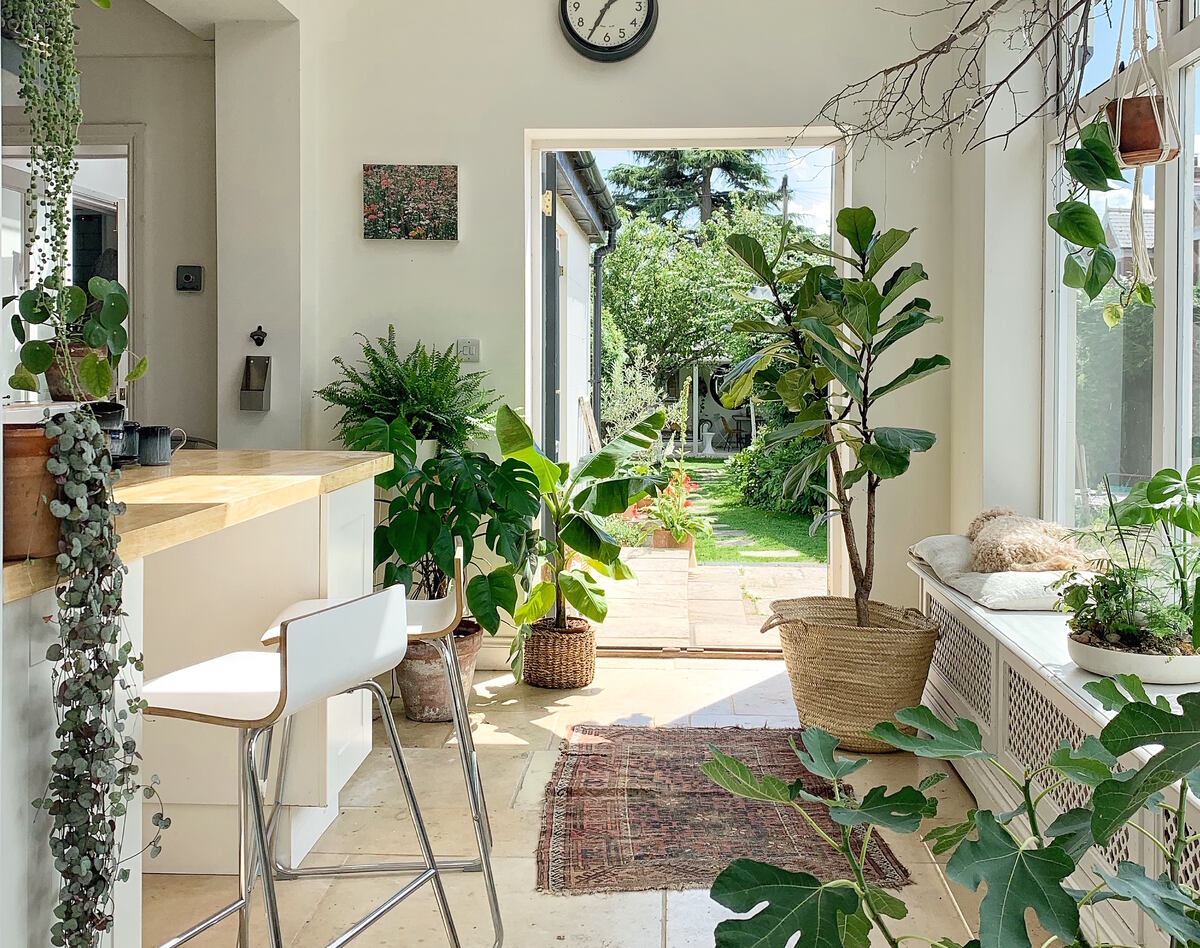
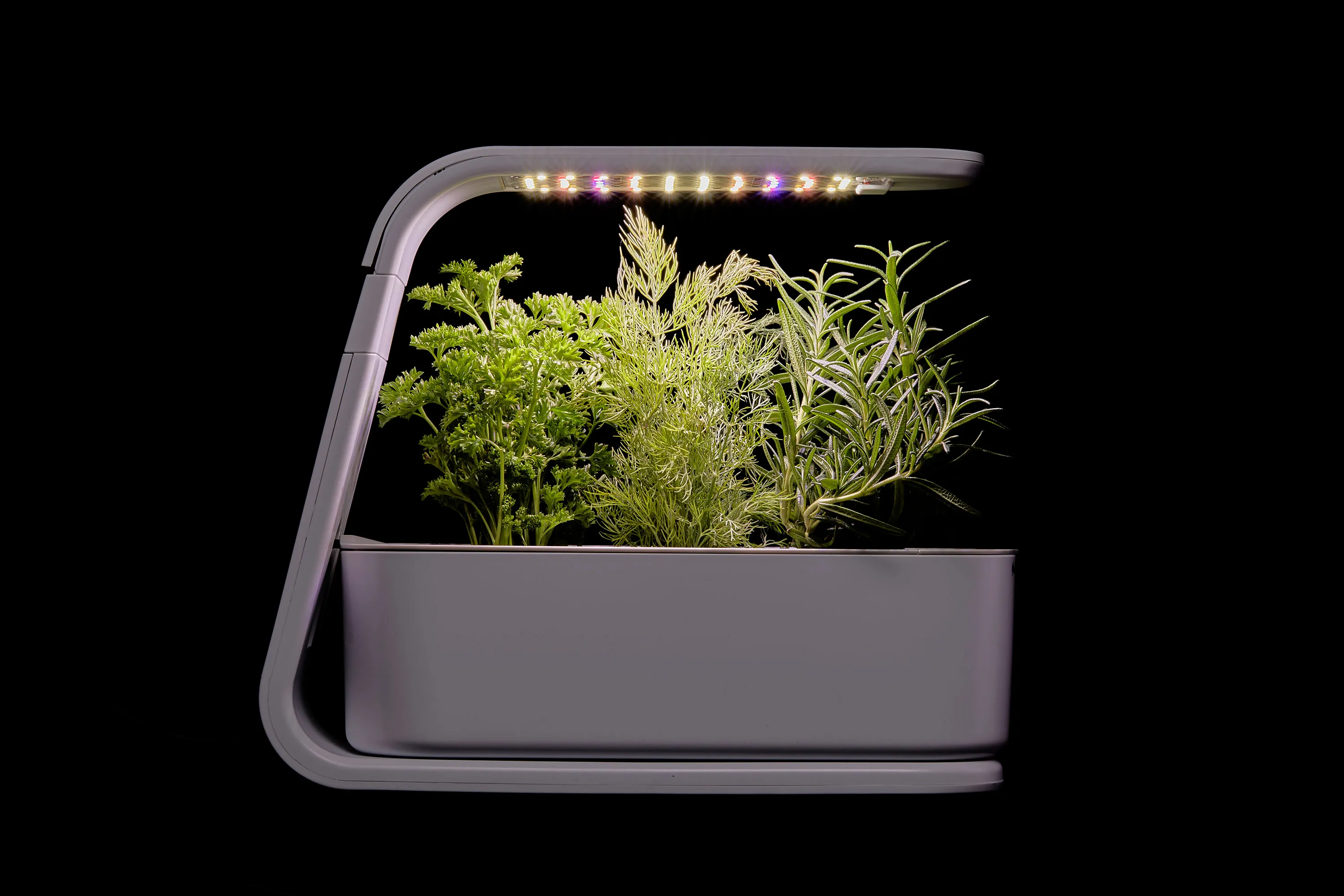
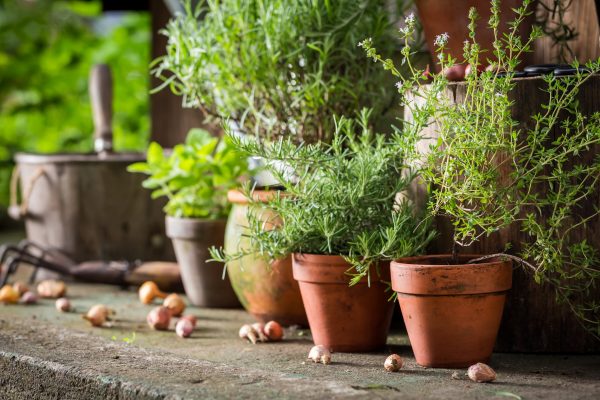
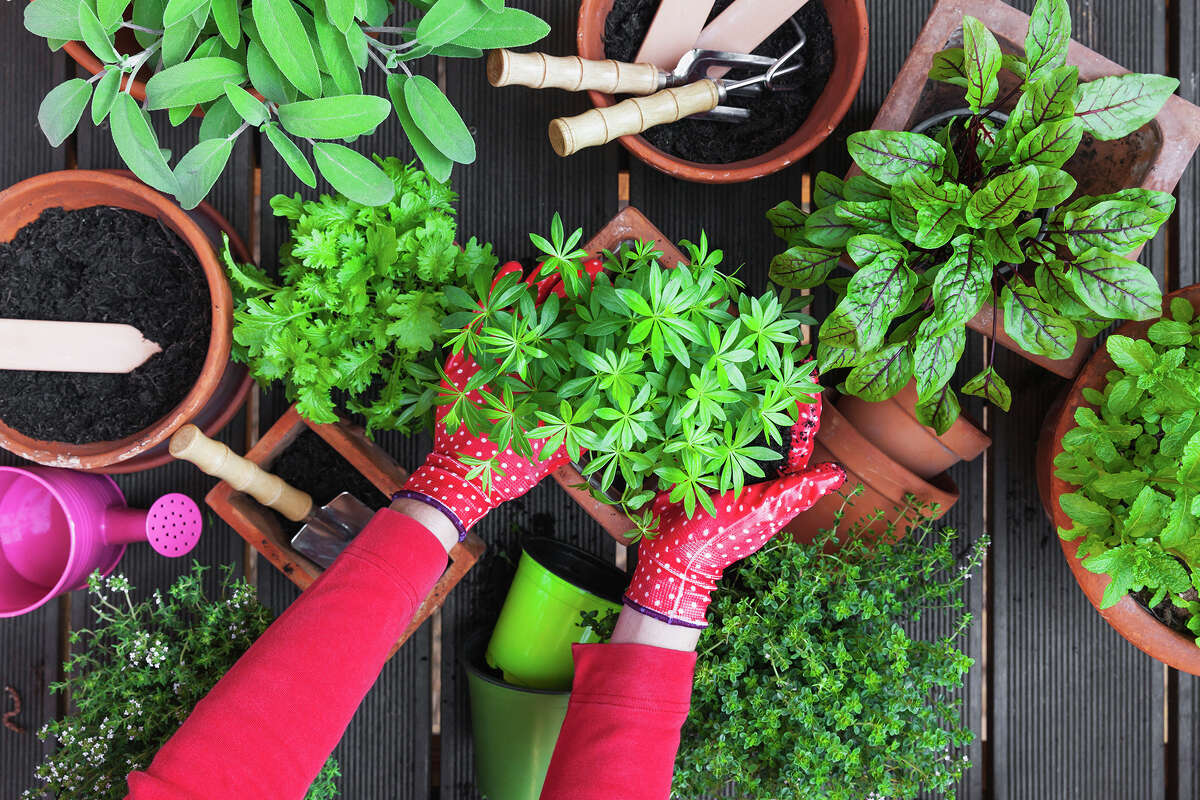
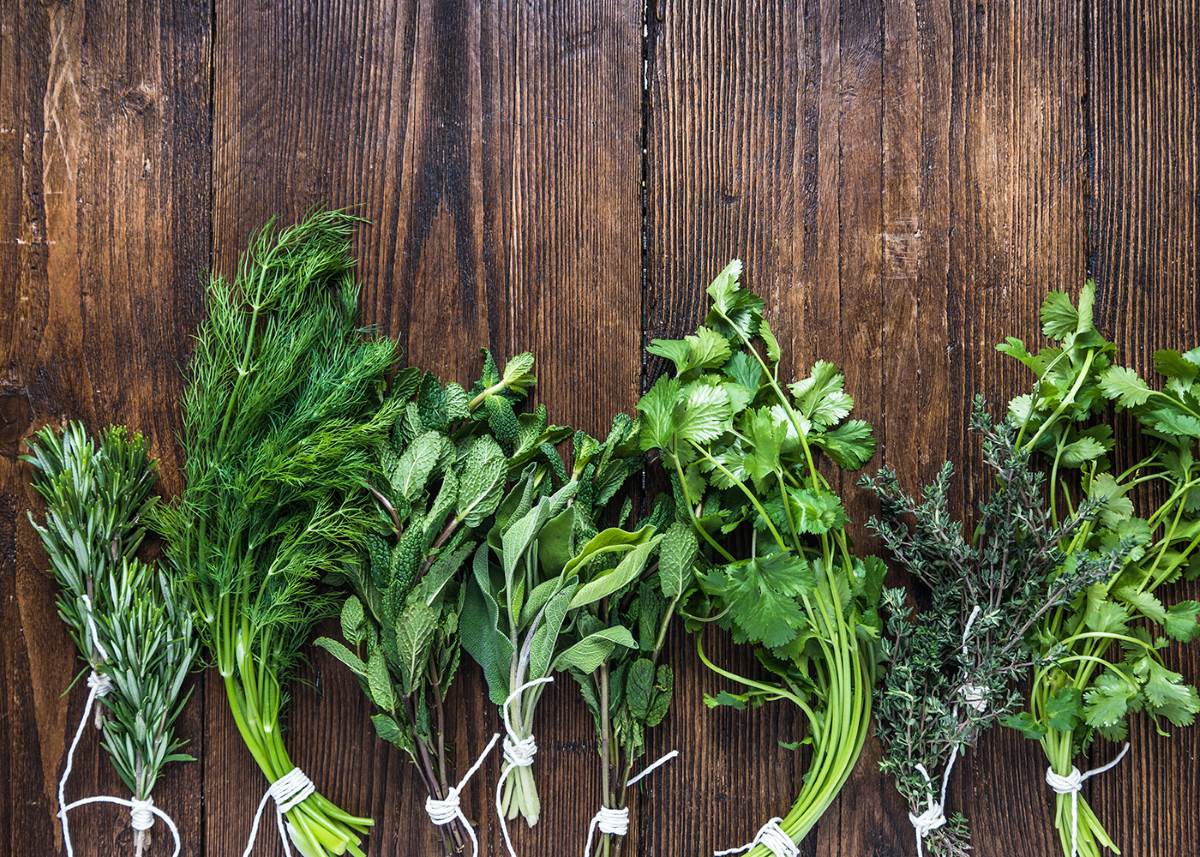
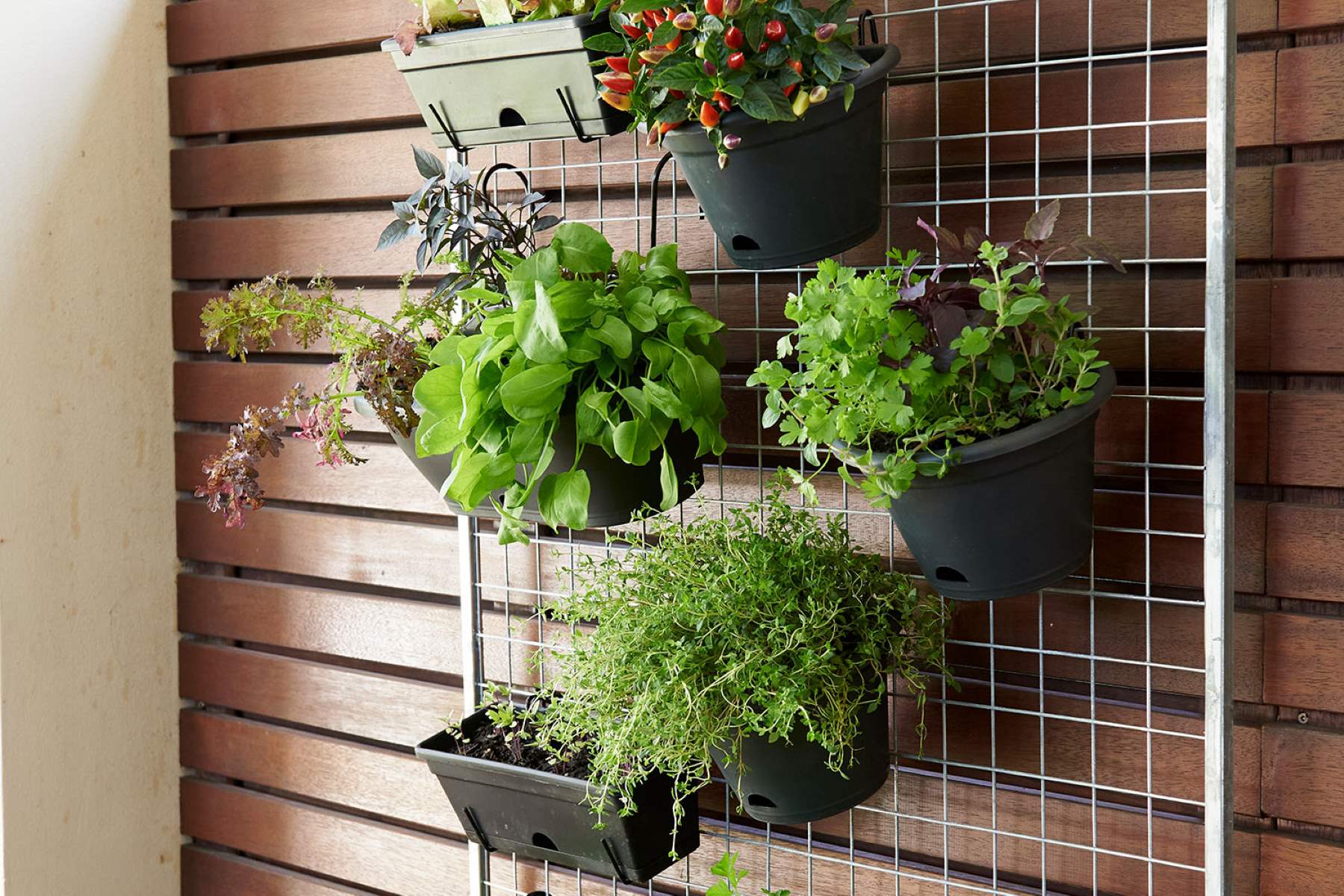
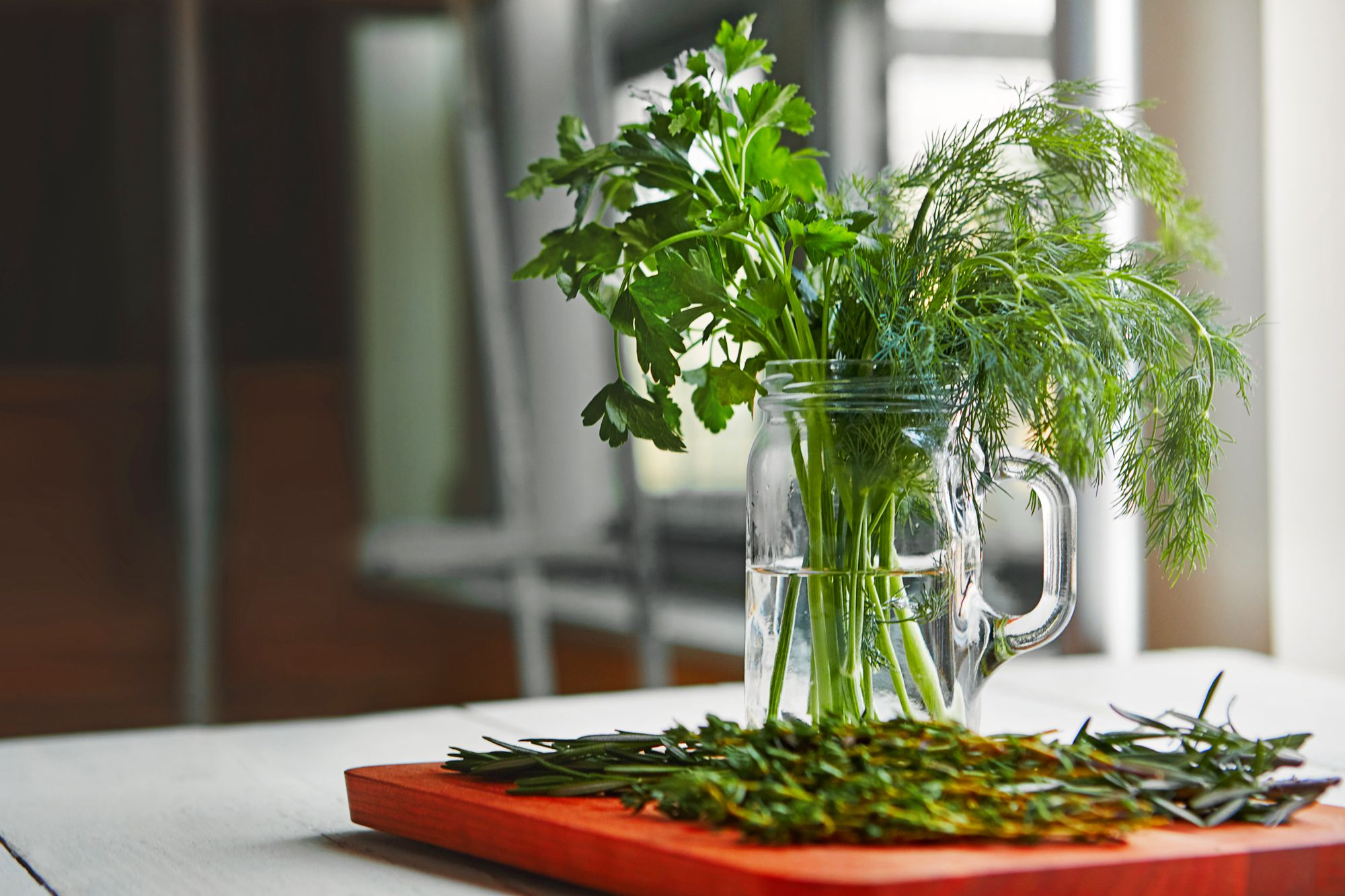
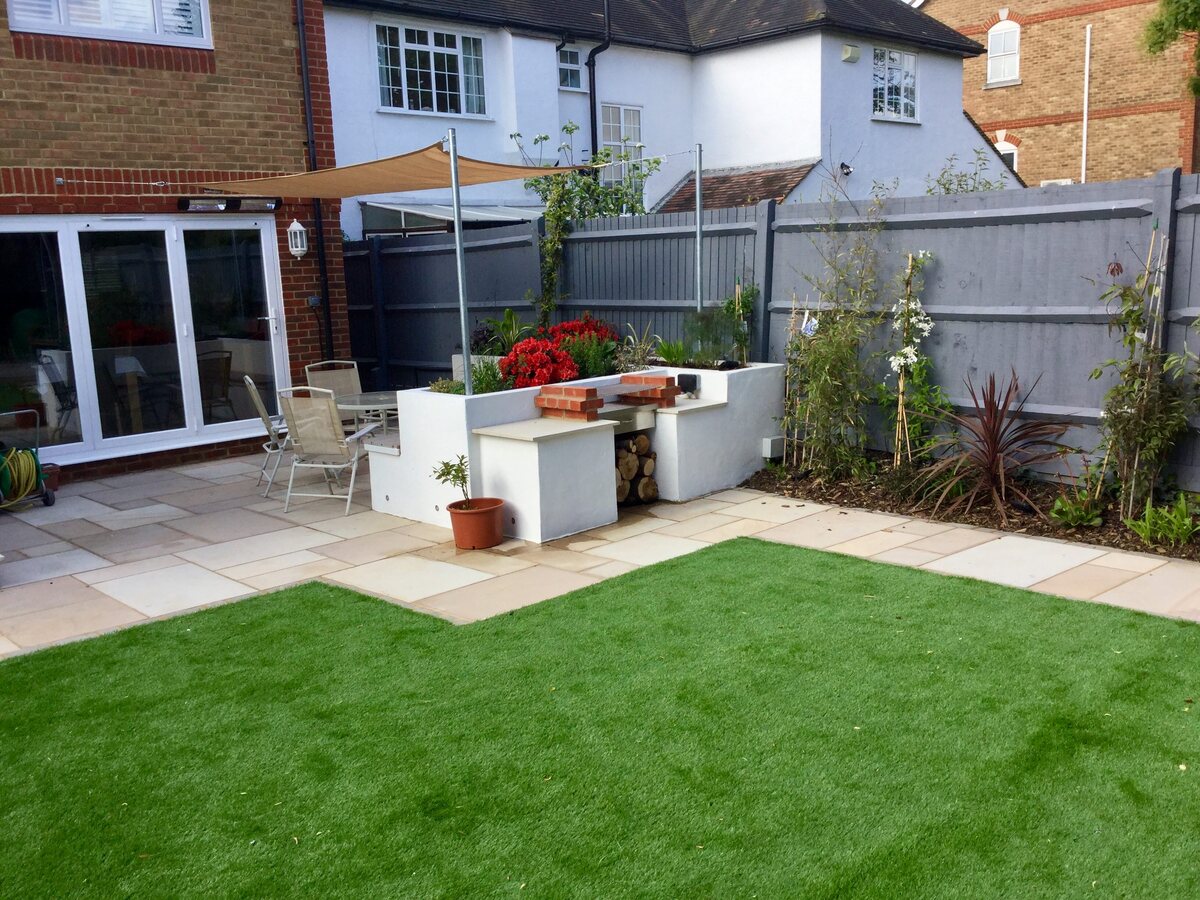
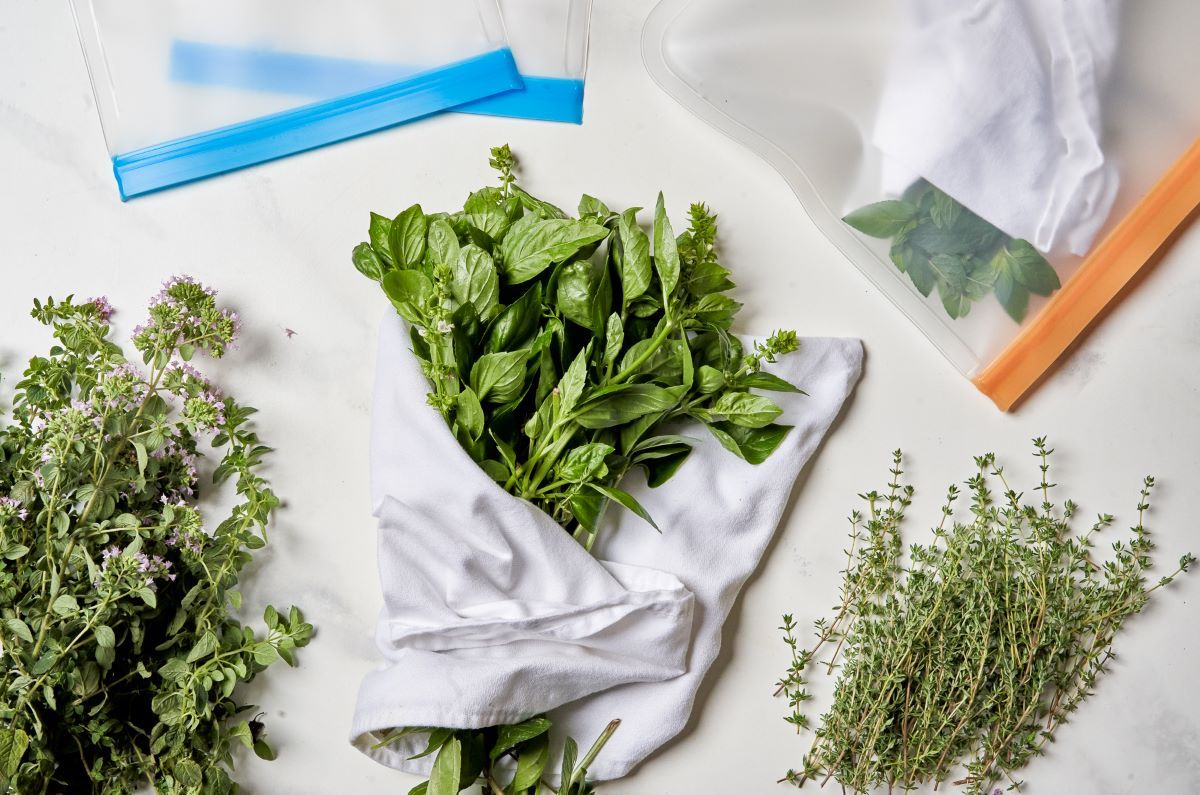
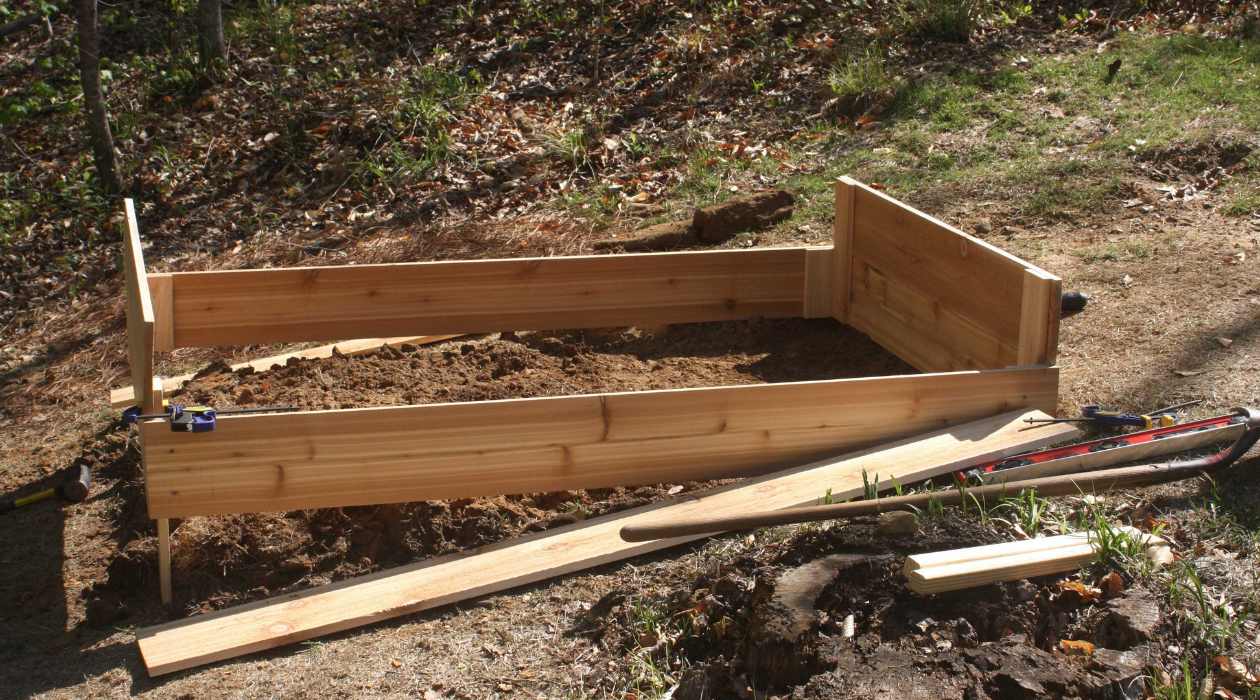
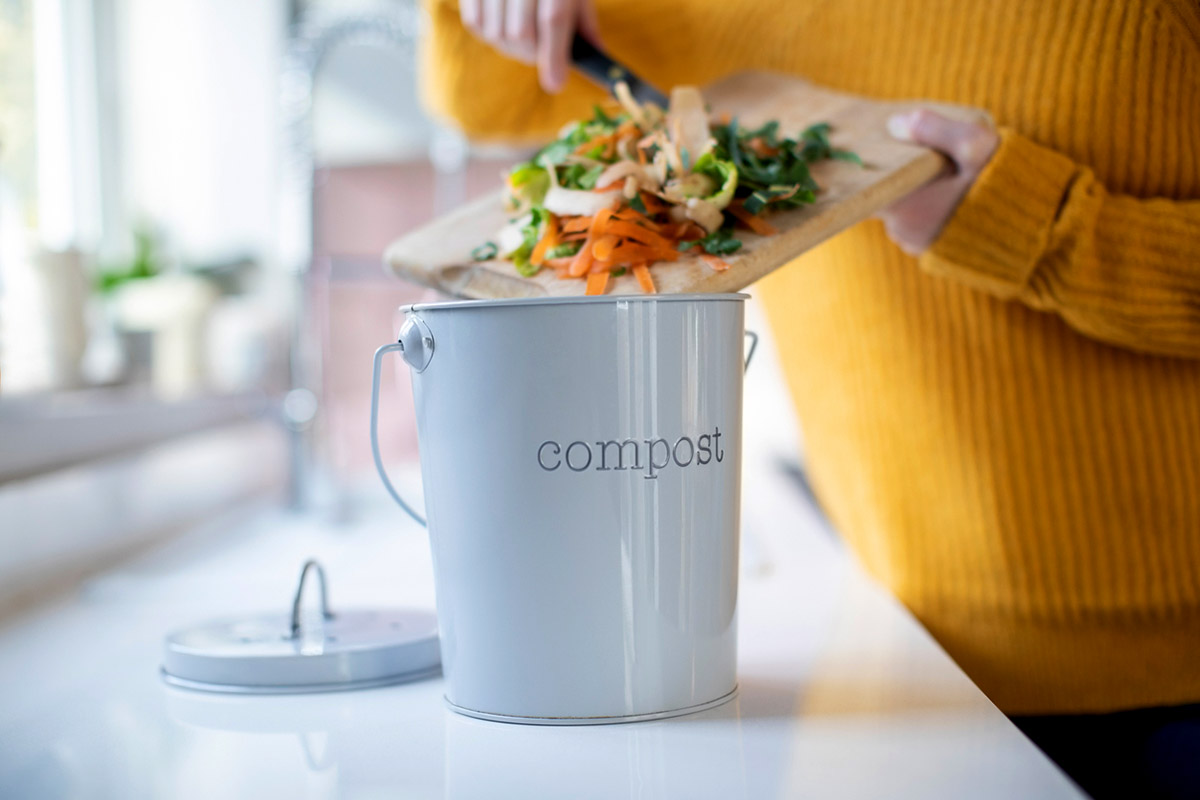
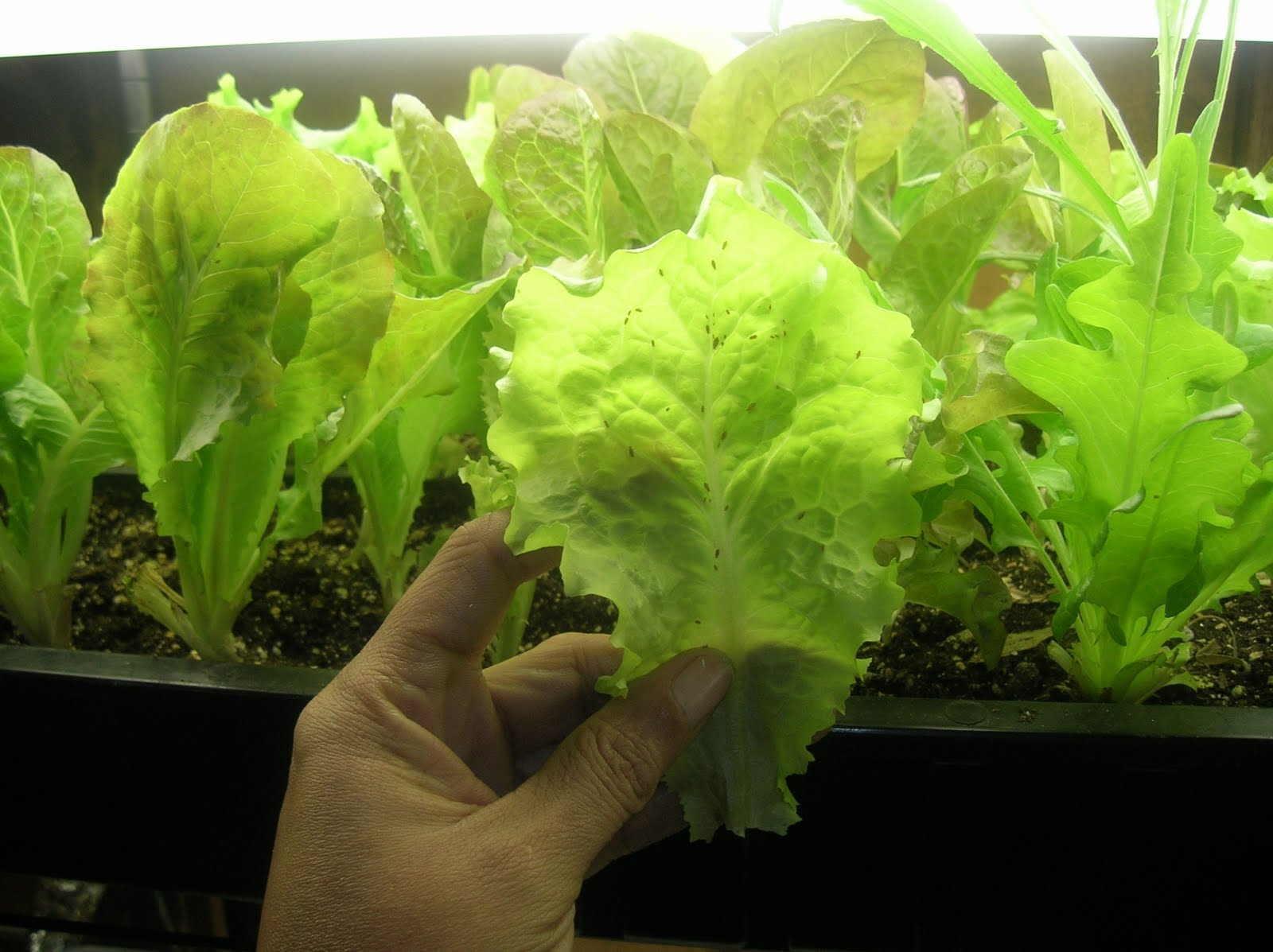
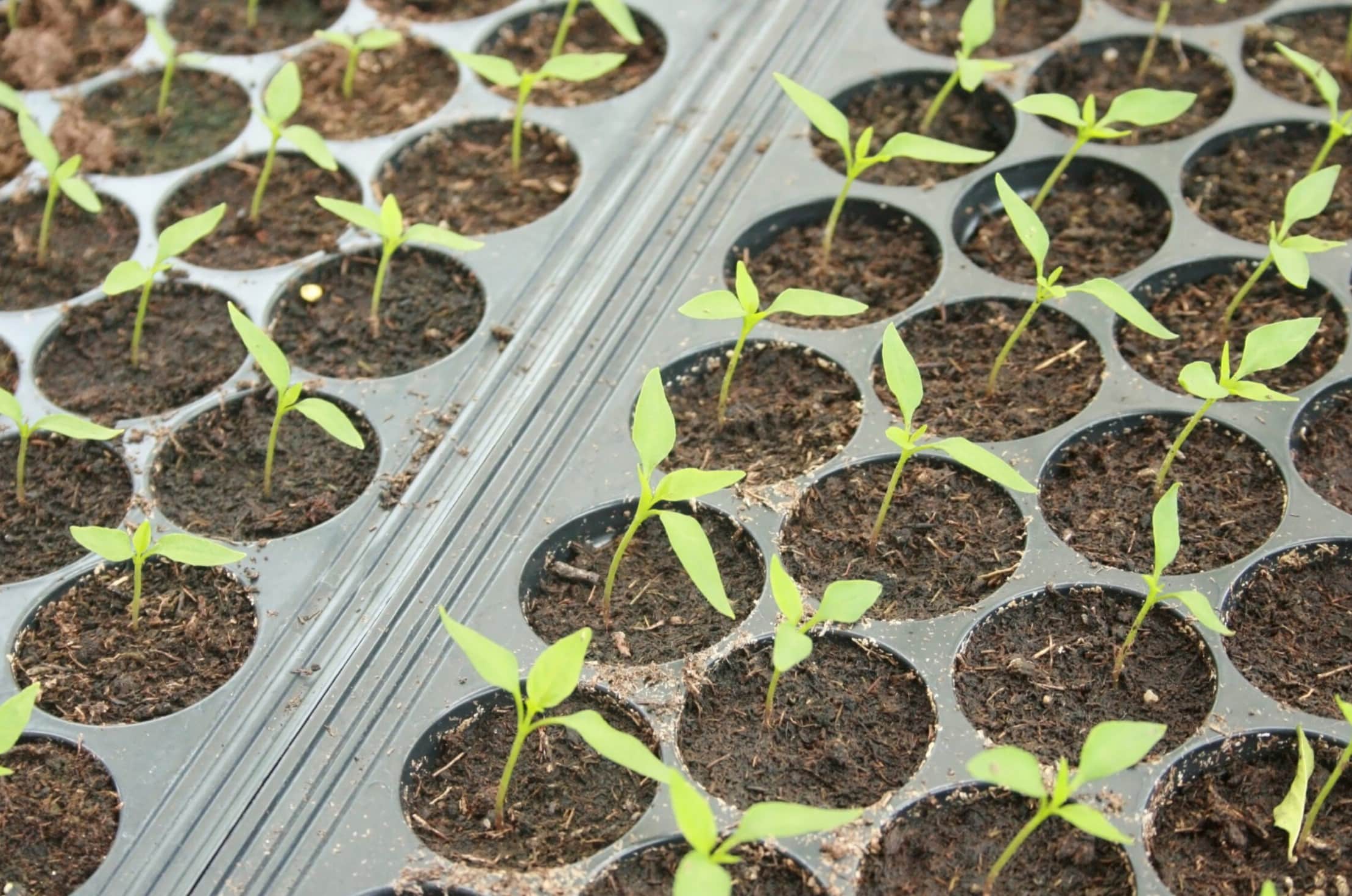

0 thoughts on “How To Start An Herb Garden Indoors”